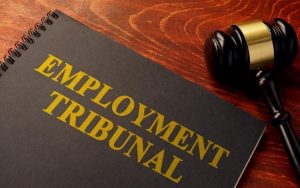
Procedure
There are 10 main steps in the Employment Tribunal (ET) Process. Each of these steps may lead to other processes that you or your employer may need to carry out. You can represent yourself as a “Self-represented Litigant” or get a representative to assist you with the process. Don’t forget your time limit to present your claim. Use the time limit calculator to make sure that you have the time limit right. Refer to the ET Procedure Rules and the Presidential Guidance – Case Management to make sure you are doing things correctly.
1. ACAS Early Conciliation
Before you put your claim into the ET you must go through ACAS Early Conciliation (EC). If EC is not successful, ACAS will issue you with a certificate. It is only when you have the certificate that you can issue a claim in the ET.
2. ET1 Claim Form
Fill in the details of your claim on form ET1 You can do this on-line or on the downloadable paper version. Section 8.2 of the ET1 claim form is where you put the facts of your claim. This is usually called the grounds of claim. Use the ET1 Builder to help you write your grounds your claim correctly.
See How to complete the Employment Tribunal claim form , ET1 Builder
3. ET3 Response Form
Form ET3 is the form on which your employer puts in their defence to your claim. When the ET receives your ET1, they will give you a case number and send your ET1 to your employer. You will get a letter from the ET saying that your claim has been accepted and sent to your employer. The letter may also give you a date for a preliminary hearing and include an Agenda for the preliminary hearing. Your employer has 28 days from when they receive your ET1 to respond on form ET3. Your employer’s response (ET3) will be sent to the ET who will then send it on to you.
4. Preliminary Hearing
A preliminary hearing is a hearing that takes place before the main employment tribunal hearing to hear your case. It is abbreviated to PHR. The judge uses the PHR to understand your case and make arrangements for the main hearing. It is usually done by phone, but sometimes you may have to appear in person. There are some cases in which there is no PHR at all. Before the PHR, you would have received an Agenda for Case management, which is a form that you have to fill in. The PHR will be done according to the Agenda. The PHR is very important, and you should prepare for the judge to discuss aspects of your case. Have your diary ready because the judge will want to agree deadlines by which things like your schedule of loss, evidence and witness statements should be supplied. Your employer may also use the PHR to ask the judge to rule that certain aspects of your claim should be struck out. You may also do the same with aspects of your employer’s response. These instructions from the judge are called directions or orders and the deadlines must be adhered to otherwise your claim could be struck out or you may be asked to pay costs.
5. Disclosure
At the PHR the Judge will make an order for you and your employer to show (disclose) all the documents that you are both going to rely on in the case. You and your employer will be required to provide a list of all documents and may also be required to provide physical copies. You can provide your documents by scanning and saving them in a zip file. You then send the list of documents in the file, and the zipped file containing the documents to your employer’s representative by the deadline. Your employer’s representative will add their documents to the list or may ask you to remove some of yours. You may also do the same. The aim is to have a list of documents that you both agree on.
[ see How to prepare your documents for the Employment Tribunal, Getting information from the other side (Disclosure)]
6. Witness Statements
At the PHR, you and your employer will agree how many witnesses you will each put forward for the final hearing. The Judge will make an order for you and your employer to exchange your witness statements by a certain date. The most important witness statement is yours, and you must provide that by the deadline.
7. Hearing Bundle
The documents that you have agreed on will now be printed and put into a file with all the pages numbered (paginated). This is the hearing bundle which will be used at the final hearing. There must be at least 5 copies. At the PHR, the judge will say who has the responsibility for preparing the hearing bundle.
[ see How to prepare your documents for the Employment Tribunal, Getting information from the other side (Disclosure)]
8. Final Hearing
The judge would have given a date or dates for the final hearing at the PHR. This is when your case is heard either before a judge sitting alone, or a judge with two lay ET members. One lay member for the employer’s side and one lay member for the employees’ side. The number of days for the hearing will depend on how many witnesses you and your employer are bringing and could be anything from one day to 5 days. The number of days would have been decided at the PHR but could change during the final hearing.
9. Outcome and Reasons
The judge (and lay members) may state the outcome of the case at the end of the hearing or may take some time to consider it. The outcome is also accompanied by the reasons that the decision was made. The written outcome and reasons are sent out after the hearing.
10. Remedy Hearing
If you win your case, the judge may say how much compensation you should get at the end of the final hearing. There could also be a separate remedy hearing to decide how much compensation you should get.
Last Updated: [15/12/2021]




